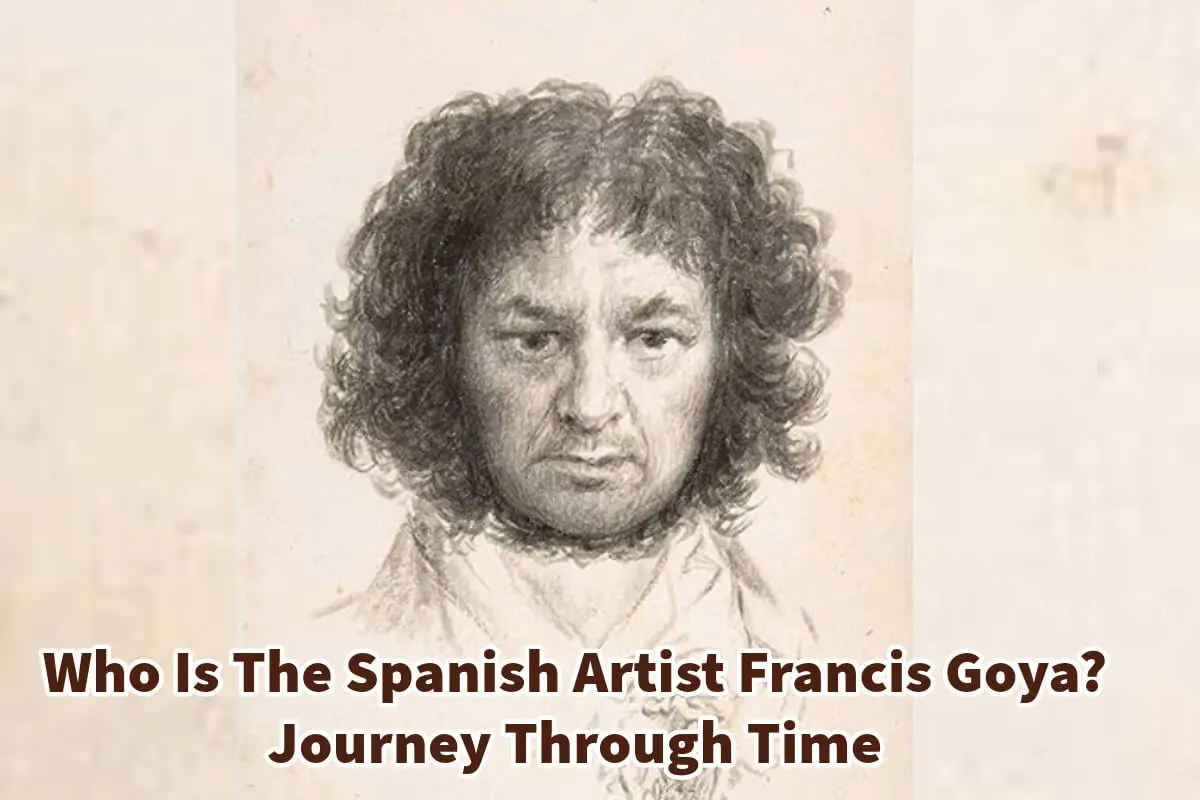Francis Goya is one of the preeminent Spanish artists in history, revered not just on the global stage but also as a national treasure for Spain. He is considered one of the most influential artists to have ever lived.
Francis Goya was born in a quaint village in 1746; he later settled in Bordeaux, France, where he lived until his demise in 1828. Goya’s artistry is inextricably linked with the pivotal historical events of his era, offering us a dual lens into both the epoch’s chronicles and a vivid impression of life during his times.
Table of Contents
- Francisco Goya: Spain’s Artistic Luminary Through The Ages
- Why Does Francisco Goya Hold Such An Eminent Place In The Annals Of Art History?
- Related Questions
Francisco Goya: Spain’s Artistic Luminary Through The Ages
Francisco de Goya y Lucientes, commonly known as Francisco Goya or simply Goya, is one of Spain’s most enigmatic and influential artists. He was born in the small village of Fuendetodos. Spain in 1746 and later resided in Bordeaux, France, until his passing in 1828.

Goya’s life and art are as captivating as they are intertwined with the tumultuous events of his era. To truly appreciate his genius, we must journey through the epochs of his life and the art he produced.
Francis Goya’s Early Years: A Glimpse Into Fuendetodos, Spain
Francis Goya was born into an artisan family in the modest village of Fuendetodos. These humble beginnings didn’t necessarily foreshadow the tremendous influence he’d eventually wield in the art world.
Yet, his birthplace’s rugged landscapes and raw humanity would forever shape Goya’s aesthetic sensibilities.
Francis Goya’s Education: The Making Of An Artist
Goya’s formal education commenced when he moved to Zaragoza, studying under local artist José Luzán. Later, he would move to Madrid, learning under the Rococo painter Francisco Bayeu, who later became his brother-in-law.
Despite these traditional learnings, Goya’s artistry was far from orthodox.
In the 1770s, after failing to win a scholarship to study in Rome, Goya took it upon himself to venture to Italy. There, he absorbed the classics yet didn’t simply replicate them. Instead, he amalgamated the grandiosity of Italian art with the authenticity of his Spanish roots, giving birth to a unique style.
Goya’s Ascendancy: The Court Painter
Returning to Spain, Goya’s skills soon caught the eye of the Spanish royal court. By the late 1780s, he had become an official court painter. Here, he painted portraits of nobility, infusing them with a candidness unheard of at the time.
His ability to portray his subjects with unflinching realism, capturing not just their likeness but their psyche, set him apart.
The Peninsular War: A Shift In Perspective
The early 19th century was a time of tremendous upheaval in Spain, with the Peninsular War against the French causing widespread devastation. These events profoundly affected Goya. His works from this period, like the harrowing “The Third of May 1808,” highlight the brutality and inhumanity of war.
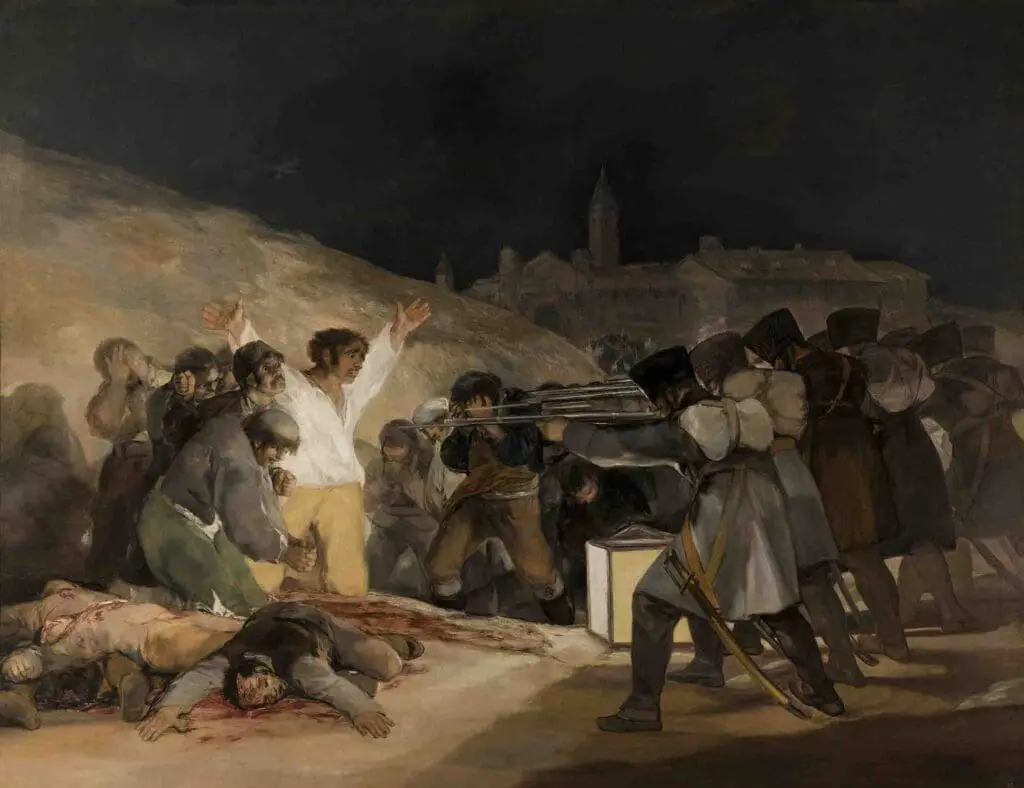
They are not just paintings but commentaries, urging viewers to confront the dark facets of human nature.
Later Life: The Black Paintings
As Goya aged, his style underwent another transformation, leading to some of his most iconic works – the Black Paintings. These were a series of dark, almost haunting paintings, which Goya painted directly onto the walls of his house.
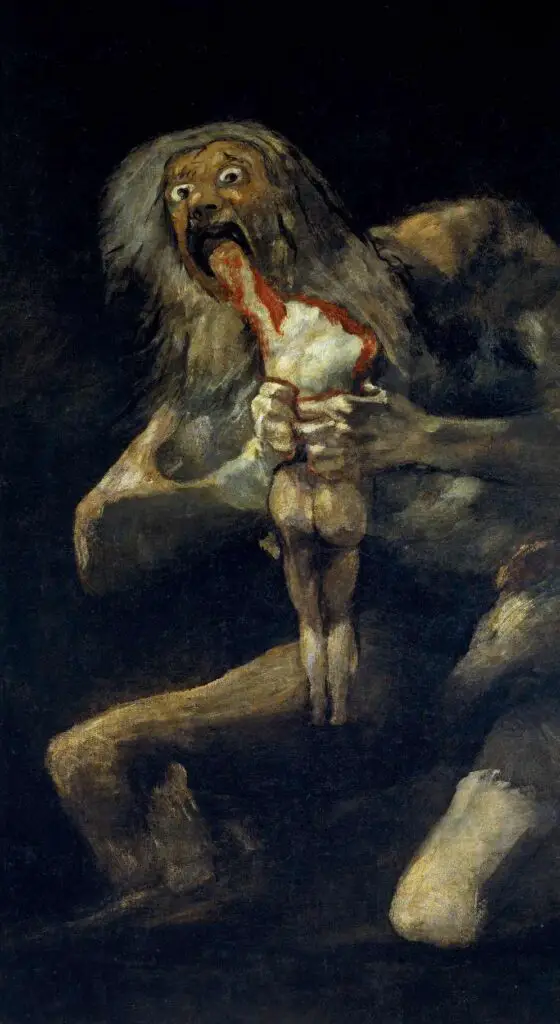
Works such as “Saturn Devouring His Son” are chilling reflections of a tormented mind grappling with personal and societal despair.
Bordeaux And The Final Chapter Of Francis Goya’s Life
Towards the end of his life, Goya relocated to Bordeaux in France. Despite old age and sickness, he continued experimenting, particularly with the then-novel lithography technique. He passed away in 1828, but his legacy was far from over.
Why Does Francisco Goya Hold Such An Eminent Place In The Annals Of Art History?
Francis Goya is a significant artist, not just due to his undeniable technical prowess. Instead, he dares to evolve as an artist.
Throughout his life, Goya refused to be a passive observer. Whether through the sardonic social critiques of his etchings, the stark depiction of war’s horrors, or the profoundly personal Black Paintings, Goya constantly held a mirror up to society and, at times, himself.
His influence can be felt in the works of many 19th and 20th-century painters. From Édouard Manet to Pablo Picasso, artists looked to Goya as a beacon of unabashed expression.
In a world constantly in flux, Goya’s commitment to truth, however unsettling, made him a great artist of his time and all time.
In Goya, we see the artist not as a mere craftsman but as a philosopher, historian, and truth-seeker, making him eternally relevant in the ever-evolving dialogue of art and society.
Francisco Goya: A Testament To Timeless Mastery
Francisco Goya, often hailed as one of the greatest artists in history, occupies a unique place in the pantheon of artistic giants.
Here is why Francisco Goya is considered among the most distinguished artists ever:
A Captivating Realism:
Goya’s portraits stand out not merely because of their beauty but due to their authenticity. His meticulous attention to detail and ability to capture the essence of his subjects made his works resonate with a truthfulness that transcended mere representation.
Societal Commentary:
Goya wasn’t just an artist but a keen observer of society. His etchings, especially the series “Los Caprichos,” offer a biting satire of his era’s societal norms and corruptions.
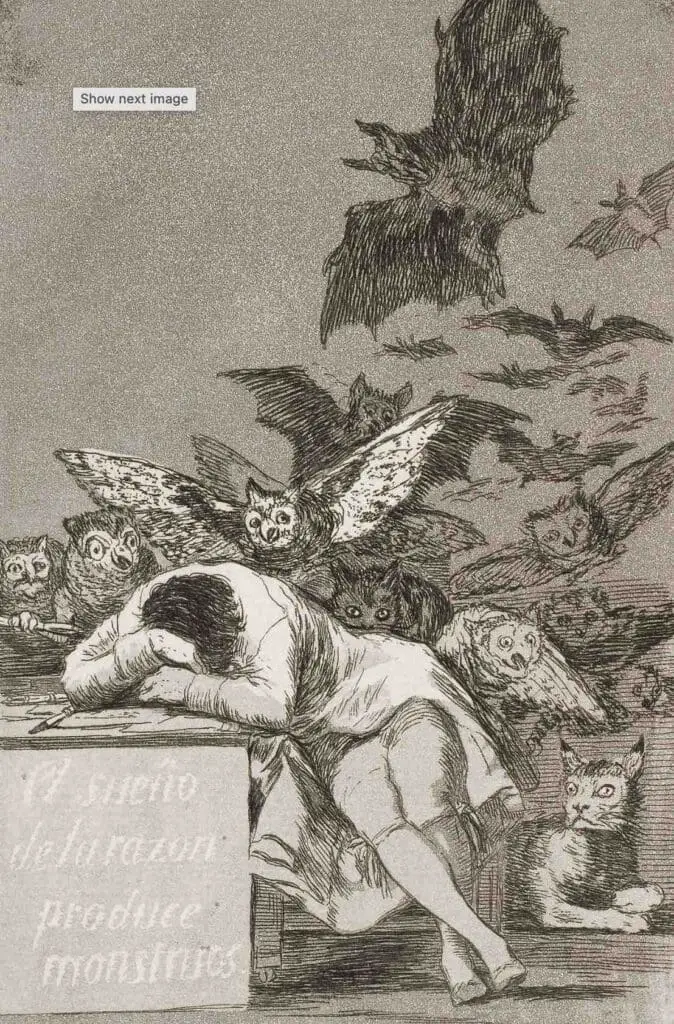
In this, he was a forerunner to modern art movements that saw art as a medium for socio-political critique.
The Evocative Depiction Of War:
The Peninsular War profoundly affected Goya, and his experiences led to some of art’s most poignant war commentaries.
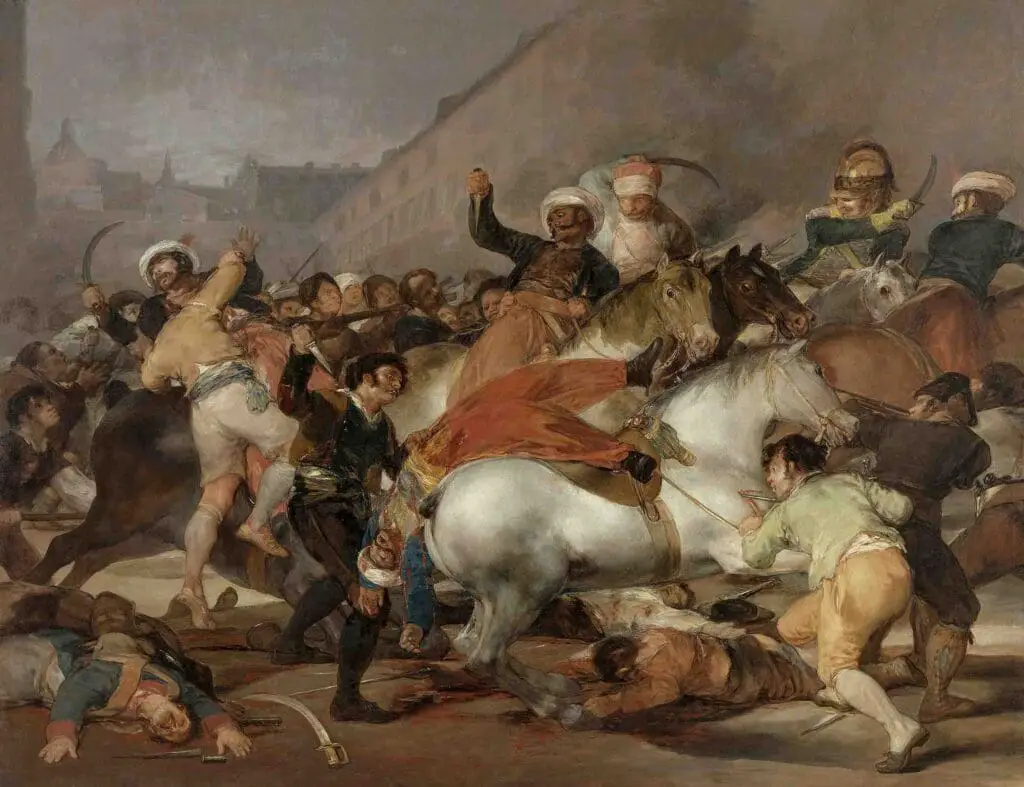
Works like “The Second of May 1808” depict events and underscore the conflict’s barbarity, inhumanity, and emotional weight.
The Depth Of Personal Expression:
Goya’s Black Paintings remain among the most intensely personal artworks ever created. These works, filled with haunting imagery, reflect the artist’s struggles with mental health, society’s descent into chaos, and the existential fears of aging.
Innovation And Experimentation:
Goya never shied away from experimenting. He dabbled in various mediums and was among the early adopters of lithography. His fearless approach to his craft kept him evolving as an artist.
Legacy And Influence:
The accurate measure of an artist’s greatness often lies in their impact on subsequent generations. Goya’s influence can be seen in the works of numerous artists who came after him, from the Impressionists to modern-day painters.
His ability to transcend his era ensures that his works remain relevant, with artists and scholars drawing inspiration and insights from them even today.
Unwavering Courage:
Living through turbulent times, Goya had the bravery to document atrocities, critique society, and expose his vulnerabilities. His art was often provocative, risking the ire of the powerful, yet he remained undeterred.
Francisco Goya’s greatness stems from his undeniable artistic skill and ability to tap into the depths of the human experience. He encapsulated the rawness of emotion, the intricacies of society, and the darker aspects of the human psyche. Through his canvas and etchings, he invited viewers to think, feel, and introspect, rendering him not just an artist but a timeless storyteller of the human condition.
Anita Louise Art is dedicated to art education, great artists, and inspiring others to find and create their art. We love art that uplifts and inspires. #ArtToMakeYouSmile! #ArtToMakeYouHappy!
If you want to see any of my art, you can find out more by clicking here. If you are interested in what inspires me and my paintings, you can discover more by clicking here.
We have a free newsletter and would love you to be part of our community; you can subscribe to the newsletter by clicking here. I would be happy to talk to you if you have any questions. You can reach me, Anita, by clicking here.
Subscribe to our Anita Louise Art YouTube Channel with great videos and information by clicking here.
Join us for our podcast “5 Minutes With Art.” Spend just 5 minutes a week with us to discover and learn about great art and artists. You can find out more about our podcast by clicking here.
Related Questions
What Is Expressionism In Art? Definition & Characteristics
Expressionism is characterized by intense and subjective portrayals of the artist’s emotions; expressionism is a captivating art movement that emerged in the early twentieth century and has left an indelible mark on the art world. While the term “expressionist” can be applied to artworks from any era, it is primarily associated with the art of the twentieth century, starting with artists like Vincent Van Gogh and encompassing various renowned figures such as Edvard Munch, Henri Matisse, and Pablo Picasso.
By clicking here, you can learn more by reading What Is Expressionism In Art? Definition & Characteristics.
About Homage To Matisse (1954) By Mark Rothko
One painting Mark Rothko painted in 1954 is called Homage To Matisse. This painting is labeled differently than his other paintings, which are usually labeled with numbers and colors. But this painting was a personal tribute from Mark Rothko to the great French artist Henry Matisse and his influence on him and his artwork.
You can learn more by reading the blog About Homage To Matisse (1954) By Mark Rothko by clicking here.
20 Of The Most Beautiful Paintings Of Women Ever Created
The portrayal of women has long been a captivating and cherished subject in the annals of art history. From the hands of renowned male painters to the brushstrokes of influential female artists, the depiction of women has yielded a rich tapestry of remarkable and celebrated works of art.
By clicking here, you can discover more by reading 20 Of The Most Beautiful Paintings Of Women Ever Created.

